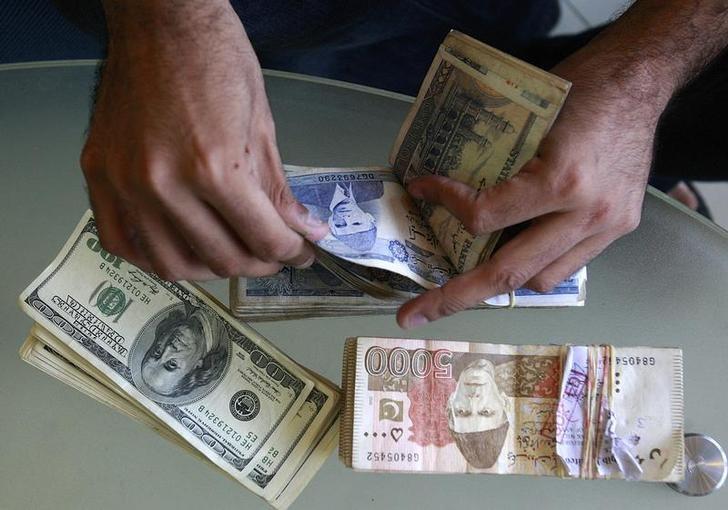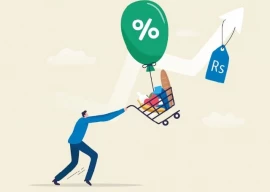
Recently, the one-year Treasury-Bill (T-Bill) and three-year Pakistan Investment Bond (PIB) rates have been trading near 13% and 12%, respectively. Quantitative analysis shows that the fall in yields during this fiscal year is due to increased demand for fixed-income securities, leading to capital appreciation. Investors have enjoyed returns beyond the agreed coupon rates, with some realising annualised returns exceeding 20%, depending on the investment horizon.
But that's the pastwhat should investors do now? A common pitch for naïve investors would be: "Sir, fixed income returns in Pakistan are already high. Look at the past two years' returns. Your money is safe, yielding more than long-term currency depreciation. So, why take risks?" However, what many advisors may not disclose is that future returns on long-term income funds, particularly those with PIBs, could drop to single digits starting next month.
Asset management companies typically charge a 1% management fee on fixed-income funds. For a fund holding a PIB yielding 12%, this reduces the return to 11%. With taxes ranging from 10-15%, the after-tax returns shrink further to around single digits or slightly above 10%. In an environment with long-term currency depreciation at 8%, investors face limited choices: they can either remain risk-averse and stay in fixed income, invest in property (though hindered by high taxation and a crackdown on black money), buy physical gold, or turn to the equity markets.
In contrast, borrowing at current fixed rates may not be a bad idea. With higher capital gains tax (CGT), a borrower securing a loan at a fixed rate of 14-15% could see their after-tax cost of debt reduced to single digits, close to the 8% annual currency depreciation. Effectively, this means borrowing at a "dollarised" rate of 2-3%. However, borrowers must hedge against potential economic downturns by diversifying their income sources, ideally into dollar-linked revenues or import-substituting products. This is no easy feat in a country with high sovereign riskjust ask the Independent Power Producers (IPPs) who have negotiated for national interest.
On the equity side, Pakistan's KSE-100 index still trades at an attractive price-to-earnings (P/E) ratio of around 5x, compared to the long-term average of 7.5-8x. While there is a systematic de-rating of the country, several stocks still offer post-tax, double-digit dividend yields and belong to fundamentally sound business groups. With a rebound in corporate profitability, these stocks are trading at attractive historical valuations, offering a margin of safety for investors.
If corporate profitability continues its long-term growth trend of over 10% annually, combined with a weighted average dividend yield of 8%, and is further supported by economic and political stability, a 6.5x P/E ratio would remain justified. This could push the KSE-100 index toward the 125,000 mark, which may seem astronomical today, just as the 100,000 level did earlier this year.
Policy implications: A path to sustainable growth
For Pakistan's economy to achieve sustainable growth, sound structural reforms are essential. Fiscal and monetary policy must remain contractionary, focusing on plugging resource wastage and widening the tax net, especially targeting affluent individuals at the top of the economic pyramid. Simultaneously, reducing interest rates to single digits is crucial, but this must be done without pressuring the external account, particularly as the IMF program concludes.
Key to this strategy is boosting exports, especially in sectors like Information Technology (IT), increasing remittances, and fostering large-scale investments where government policies are honoured and stable. A low interest rate environment, supported by structural reforms, could have a multiplier effect on job creation, exceeding even the impact of the Public Sector Development Programme (PSDP). The time for risk-taking is nowinvestors must act prudently, conduct proper due diligence, and seize the opportunities that exist, rather than waiting too long to join the bandwagon.
THE WRITER IS AN INDEPENDENT ECONOMIC ANALYST



1725443747-0/Untitled-design-(5)1725443747-0-165x106.webp)








1731669127-0/diddy-(44)1731669127-0-270x192.webp)




1731647129-0/Untitled-design-(56)1731647129-0-270x192.webp)






COMMENTS
Comments are moderated and generally will be posted if they are on-topic and not abusive.
For more information, please see our Comments FAQ